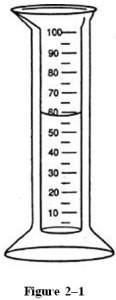
Chemistry, 29.08.2019 18:40 jayjinks976
Which of the following explains the formation of the curved surface of water in the graduated cylinder shown below?
a: hydrogen bonds form between water molecules
b: ionic bonds form between glass molecules in the cylinder.
c: covalent bonds form between water molecules and glass molecules in the cylinder.
d: attractive forces form between polar water molecules and polar glass molecules in the cylinder.


Answers: 1


Other questions on the subject: Chemistry

Chemistry, 22.06.2019 07:30, nayiiii1874
What three things determine the shape and size of a puddle when water is poured out onto a surface
Answers: 2

Chemistry, 22.06.2019 08:30, microwave13016
Agroup of students is studying convection current. they fill two identical balloons with the same amount of helium. one balloon is placed in a freezer and the other is in an area with warm air. after 10 minutes, the balloon are released from a height of 1 meter. which of the following to the students most likely observe? a) the warm balloon expands and rises. the cold balloon shrinks and sinks b) the balloon both rise. the cold balloon is larger than the warm balloon c) the cold balloon expands and rises. the warm balloon shrinks and sinks d) the balloon rise at the same rate. both balloons are the same size
Answers: 1


Chemistry, 23.06.2019 02:40, towelmearowel
Calculate the standard enthalpy of formation of liquid methanol, ch3oh(l), using the following information: c(graphite) + o2 latex: \longrightarrow ⟶ co2(g) latex: \delta δ h° = –393.5 kj/mol h2(g) + o2 latex: \longrightarrow ⟶ h2o(l) latex: \delta δ h° = –285.8 kj/mol ch3oh(l) + o2(g) latex: \longrightarrow ⟶ co2(g) + 2h2o(l) latex: \delta δ h° = –726.4 kj/mol
Answers: 3
You know the right answer?
Which of the following explains the formation of the curved surface of water in the graduated cylind...
Questions in other subjects:


Mathematics, 10.02.2022 23:30

History, 10.02.2022 23:30

Mathematics, 10.02.2022 23:30








